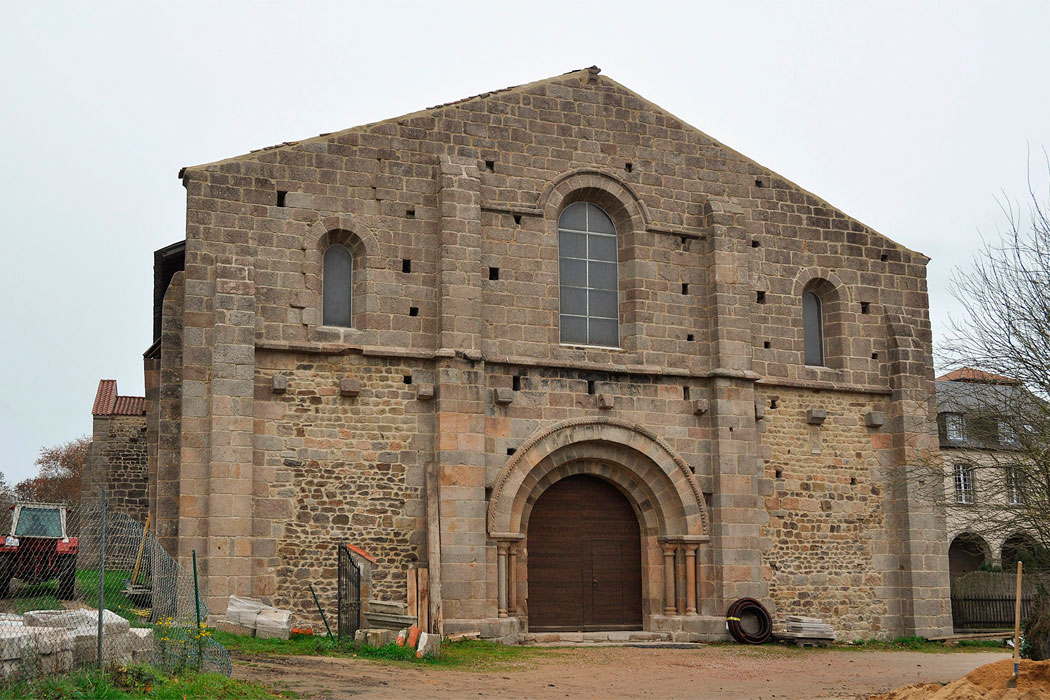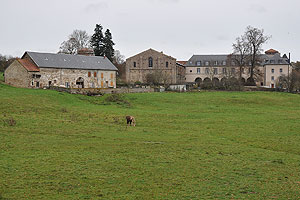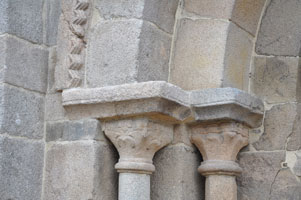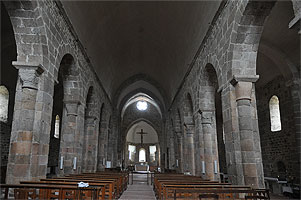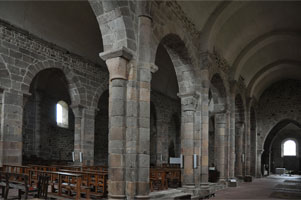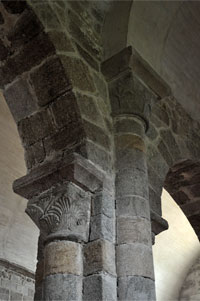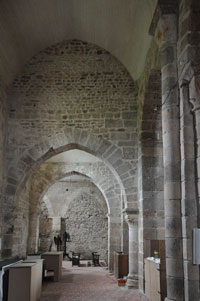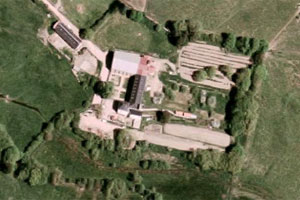The Cistercian abbey of Bellaigue has rather uncertain origins, which seem to date back to the mid-10th century, when it was founded as a Benedictine priory dependent on the abbey of Menat (Puy-de-Dôme) . Its foundation is thought to have involved Adémard and Odon of Bourbon. After a dispute between Menat and this priory, in 1136 Bishop Aimeric of Clermont intervened and granted Bellaigue its independence.
The following year, the monastery was reformed and affiliated to the Cistercian Order, coming under the authority of the abbey of Montpeyroux (Puy-de-Dôme). It was at this time that the church was built, which still survives, although it has undergone significant alterations to its structure. Bellaigue also took part in the foundation of the abbey of Feniers (Cantal). The house enjoyed the protection of the lords of Archambaud and Montluçon, and became their burial place; in this respect, one should note the tombs of Archambaud VIII the Great (c. 1197-1242) and his wife Beatrice of Montluçon (c. 1195-c. 1238).
From the 14th century onwards, the monastery fell into decline due to the instability of the period, the Hundred Years’ War and outbreaks of plague. Later it came under commendatory abbots and, in 1689, suffered a fire that forced the reconstruction of some of its buildings. With the Revolution, the abbey was closed and the site passed into private hands. In 1880, the vaults of the church collapsed. Since 2001, the monastery has regained religious life with the arrival of a new monastic community.
Of the medieval complex, the 12th-century Romanesque church survives. It is a building with three naves and seven bays, together with a transept that has been much altered. This transept leads to the chevet, which originally had five apses: the larger central one and two on either side of the transept arms. Today only the central apse remains, the lateral ones having been lost in the 18th century. The other monastic buildings are of a later period, although some traces of the medieval constructions can still be seen.
Affiliation of Bellaigue
According to Originum Cisterciensium (L. Janauschek, 1877)Abbey of Bonnevaux (Isère) / 1119
Abbwy of Montpeyroux (Puy-de-Dôme) / 1126
Abbaye de Bellaigue (Puy-de-Dôme) / 1137
Abbey of Feniers (Cantal) / 1173
(Not in Originum Cisterciensium)
- AUBERT, Marcel (1943). L’architecture cistercienne en France. Vol. I. París: Ed. d’Art
- BEAUNIER, Dom (1912). Abbayes et prieurés de l'ancienne France. Vol. 5. Bourges. Abbaye de Ligugé
- BOUVARD, Emmanuelle Marie (2016). Empreintes monastiques en moyenne montagne du XIIe siècle à l’actuel. Tesi doctoral. Université Lumière Lyon 2
- BÜTTNER, Stéphane (2020). Virlet. Abbaye de Bellaigue. ADLFI
- CRAPLET, Bernard (1972). Auvergne romane. La nuit des temps, 2. Zodiaque
- DU TEMS, Hugues (1775). Le clergé de France, vol. III. París: Brunet
- GOLLIARD, Claudius (1902). Notice archéologique sur l’église de Bellaigue et sur les tombeaux des derniers sires de Bourbon. Revue d’Auvergne, vol. XIX
- JANAUSCHEK, Leopoldus (1877). Originum Cisterciensium. Vol. 1. Viena
- SAINT-MAUR, Congregació de (1720). Gallia Christiana in provincias ecclesiasticas distributa. Vol. 2. París: Typographia Regia
